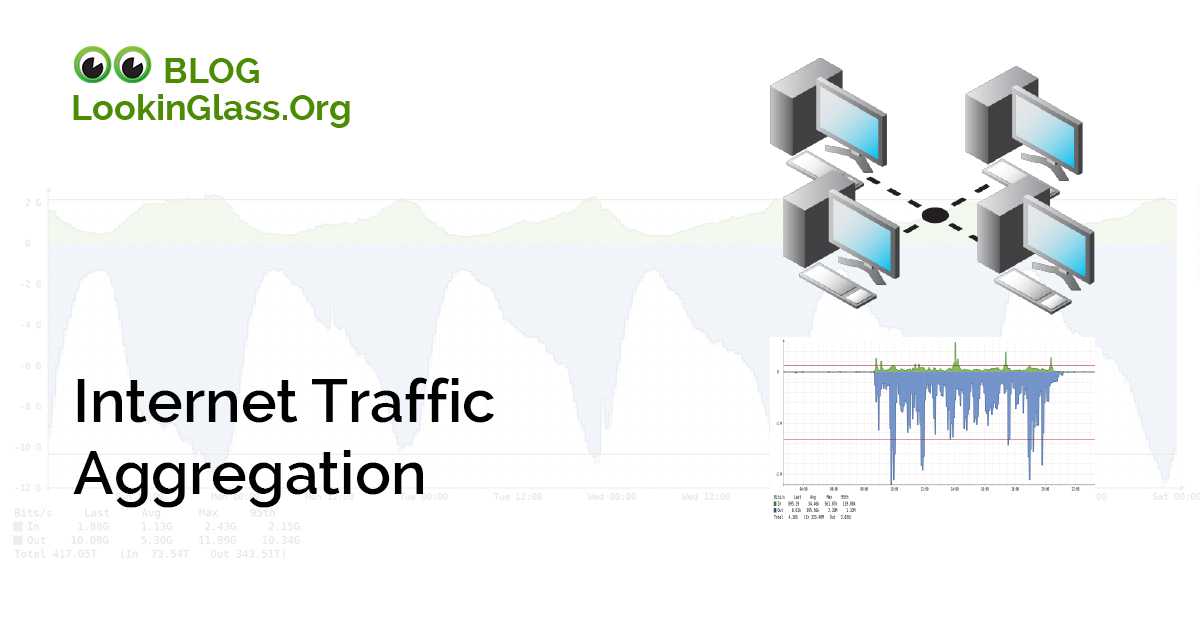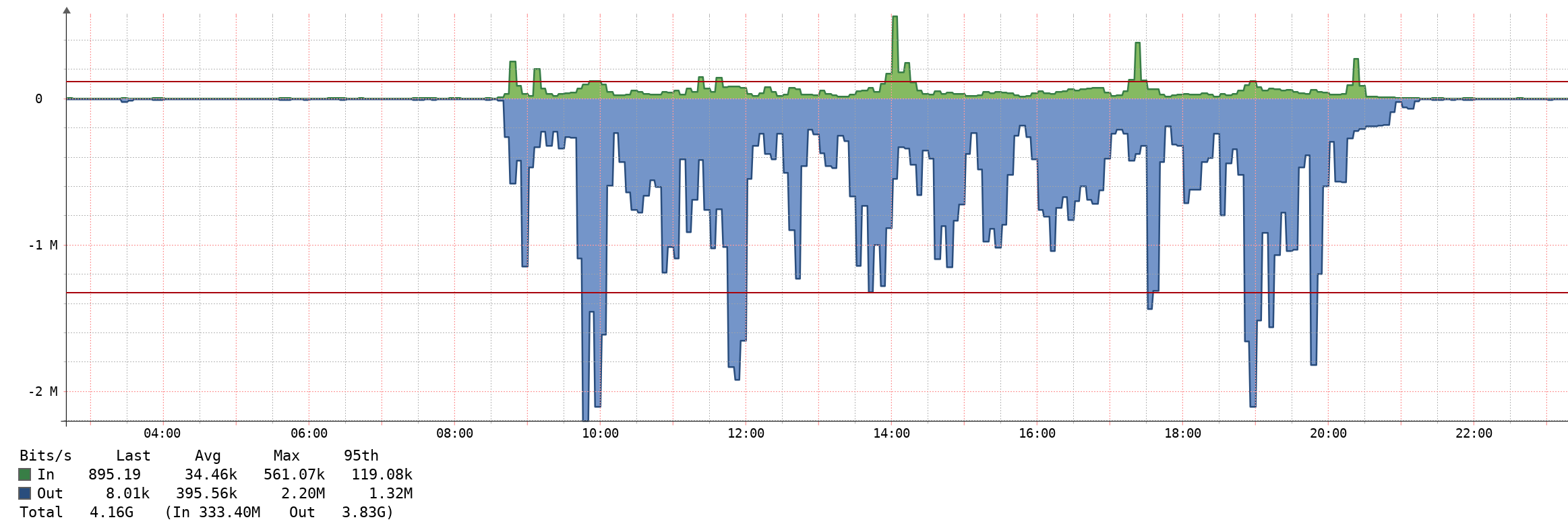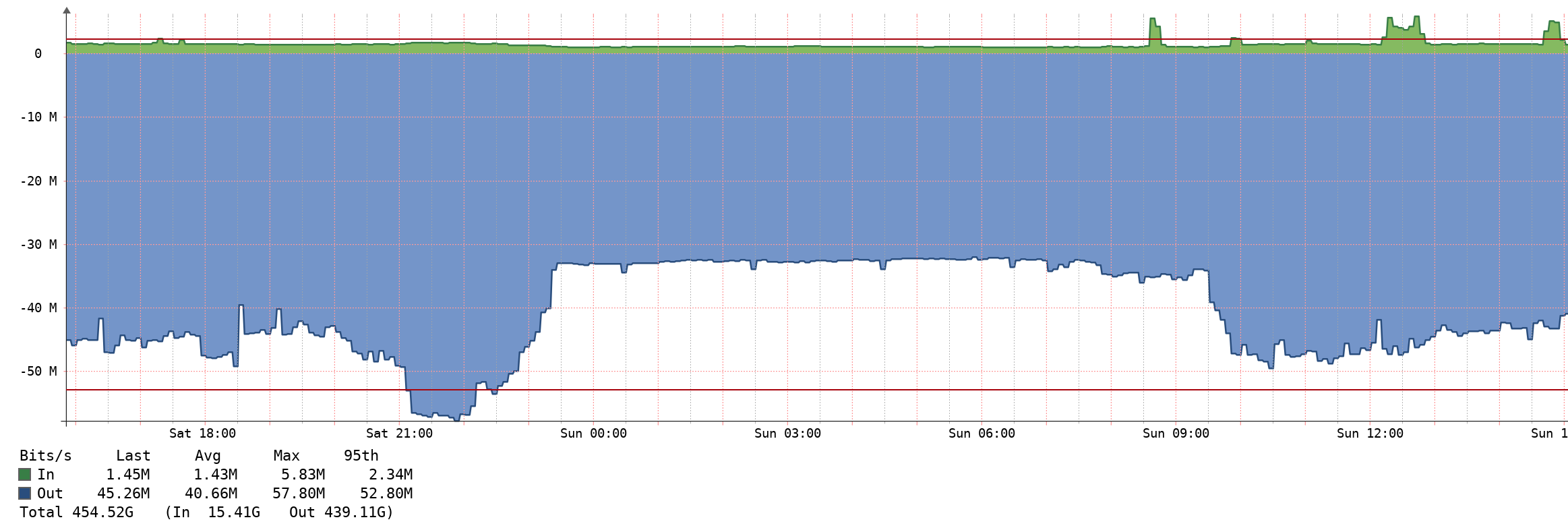Real BGP table Telegram Bot with some network utilities
|
Connect BOT |
Analyze stats |
Read blog |
Internet Traffic Aggregation
⇐ Post ID: 3 ⇒/ channels / internet-traffic-aggregation
February 20, 2019
#isp #channels #traffic
Nowadays, Internet provider business includes numerous services. This article will consider the core business that has been the launching point of everything, i.e. data communication business.
Now this is an absolutely classic model �bought in bulk cheaper - sold at retail more expensive�.

Nowadays, we have high-speed communication channels connected directly to our computers - this is a wired connection of 10/100 Mb/s, 1/10-Gbit connections, and connections by wireless technologies at speeds up to 1 Gbit/s. All this is very fast and comfortable for us, but the whole point is that any of our computer or gadget creates a rare peak load. Yes, there are exceptions - if we download a big file, watch the video in very high quality, use some kind of torrent service and a few more options. If not, then we practically do not use the full speed of the channel. And the high speed connection is really necessary only for one purpose - to do something quickly. Quickly upload a picture, quickly open a �heavy� web-site, quickly download a file.
This loading chart shows the work of the Internet-channel of a small office
consisting of 4-5 employees (in blue - data transmitted to the client, in
green - data transmitted from the client to Internet):

They came to the office a little bit earlier than 9:00 am, started checking email, communicating in social networks, chatting in instant messengers, etc. And all together they created a load of a little over 2 Mb/s. The office apparently ended the workday at about 8:00 pm, but someone lingered till 9:00 pm. After that, the load fell completely to zero values.
This office has 100 Mb/s connection. That is, in fact, just a little is required for ordinary work.
It should be noted that on this chart shows the loading as an average for every 5 minutes. If we consider smaller time intervals, then we will see higher peaks, perhaps up to a maximum of 100 Mb/s, as well as lower drops - literally to zero. But anyway, we still need very low speeds today for work (not for entertainment) (the chart is shown for March 15, 2019).
Here is an example of another office. This is the headquarters of a small
network trading company. Video cameras are installed at the remote points,
they send videos to the office via Internet

Video cameras generate a permanent data flow. Therefore, the load is constant, severe, and continuous. Do you know why there is such a flat "shelf" at night? The cameras sleep too. In other words, they reduce the amount of information transmitted when they do not record movements. But there is a lot of traffic from 18:00 to 23:00.
Other services are also used in the office: the same mail, the same social networks and instant messengers, but their load on this chart is completely lost.
But what will happen if there are many such users? Uniting into one large
channel, such clients generate a smooth wave-like picture. Here is, for
example, the real chart of the main channel of connection of a large home
networks provider. This provider has about 11.5 thousands of users who have
a technically active connection and positive balance, that is, those who
have the ability to instantly access the network (in blue - traffic towards
home users, in green - traffic towards Internet):

See, 11 thousands of users consume 11 Gbit/s of traffic. That is, each user - those 1-2 Mb per second. Approximately.
Yes, it is clear that these users are not simultaneously online and use very different services. These are just statistical data. But these are big enough numbers to show the truthful overview.
And this is the everyday story: people start waking up from 7-8 am, a rather rush work begins by 11-12 am, and the traffic sharply increases almost twice in the evening from 6 pm. People watch movies, actively use Internet services, and play. And so on until 1-2 am.
Thus, we see that a single subscriber (user or company) is poorly predictable regarding the volume of services consumption. Numerous subscribers give a predictable, same-type picture, allowing to carry out a monetary assessment of costs, long-term planning, forecasting, assessment of the possibility of connecting large groups of consumers.
 Lookin'Bot
Lookin'Bot